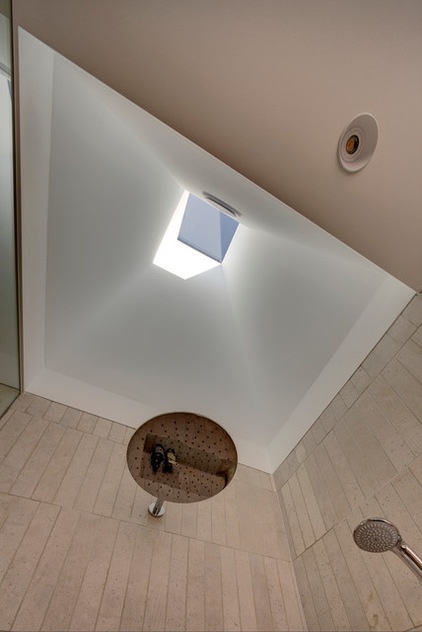Design Practice: The Year in Review
http://decor-ideas.org 01/01/2015 21:43 Decor Ideas
The resolution season is quickly approaching. It’s that time of year when we reflect on where we’ve been and make promises that will shape the year ahead. If you run a small business or you’re in the 60 percent of American Institute of Architecture member firms with five or fewer people, you may think that a yearly review is a luxury only larger firms can afford. But there’s a reason larger companies take the time to consider the impacts of their efforts at the end of each year — because it’s important. Here’s a look at how smaller firms like yours can benefit too.

Where you’ve been. We’re often so focused on keeping up with our daily tasks, the immediate actions that pay the bills, that we don’t stop to appreciate the hard work that’s landed us where we are today. The end of the fiscal year is an excellent opportunity to look back and survey your wake. Can you account for the 20 percent of your efforts that yielded 80 percent of your results? That’s a really useful thing to know, isn’t it?
Project postmortems are helpful for highlighting parts of your designs, delivery and execution that still need refining. Complete postmortems for any projects you’ve closed out over the course of the year while they’re fresh in your mind.

Securing client reviews is a part of that process too, and tying it to a project close-out procedure will ensure that your client is still engaged enough to provide helpful feedback. Houzz offers an easy and particularly relevant platform for doing this; and it will make your profile more complete too. These evaluations can reinforce what you did well and flag what needs improving. Keep a list and resolve to do better next year.
You might also ask yourself:
What did I accomplish? Did I meet the goals I set for the business?What am I most proud of?What did I learn?What worked? What didn’t work?

From these simple questions, you should be able to draft the chapter heading for your year. How would the abstract read? Certain themes will likely emerge; the essence of the review process is to take note of those themes and learn from them. Decide whether those are the ones that you want to define your business moving forward. If not, the year-end pause is a good time to figure out a way to pivot and change the narrative.

If your business is new, you may not have any prior year goals to measure against; we’ll work on those in the next step. If you have set goals and you’ve met them all, that’s good (and bad). This year you’ll need to level up. If you’re constantly meeting your prior year’s goals, you’re not thinking big enough.
If you haven’t met last year’s goals, find out why. Were they too ambitious? Did you have trouble executing week by week? Was there another reason? Something you had control over?

It’s normal to not achieve everything you set out for your business to accomplish — healthy even. There’s a balance between setting the bar too high and not high enough. Challenge yourself to find that tipping point that moves the business forward without sapping motivation.

Where you’re going (goals). I think the looking-back part of the review process should account for the smallest portion of the overall review. Looking forward is much more energizing. This is your chance to correct your course, propose a new vision, reimagine, reshape and refocus. The looking ahead part of the review has the potential to be the most rewarding.
We usually overestimate what we’re capable of doing in the short term but underestimate what we can actually accomplish in the long term — in a year for example. Step back and think about where you want to be at this time next year and parcel it into a realistic plan that you can execute month by month. Think big. You’ll surprise yourself at the results your consistent effort can yield.

When setting your goals, be sure they’re specific and measurable. “Higher revenue” isn’t a goal; it’s too general. What exactly are the things that contribute to higher revenues? Write those things down. A certain type of work? A certain type of client? Selling certain products or services?
It may help to categorize your goals. Financial goals can be quite different from design or educational goals, for example. After you’ve listed them, pair each with the next specific steps or actions required to move forward with each one. As you dig in, you’ll have a framework to build on as you chip away at your goals.

How to get there. To meet these goals, you’ll need a standard for judging their success. You’ve probably heard the saying, “What gets measured gets done.” But just because we can measure something doesn’t mean it’s the right thing to measure. Profitability is a good example. It’s by far one of the easiest things to measure. But if you gauge your success by this metric, you may not be achieving the broader goals and mission of your business. Certainly profitability must be considered (and measured), but increasing profitability may come at the expense of something you’ve actually prioritized higher on the list.

Choosing what to measure establishes the basis for making decisions and taking action. If your hypothetical goal is to sell two plan packages each month, netting you $10,000 in revenue, and you also know that every 100 visits to your sales page nets one sale, then you have a defined set of data, one that’s clearly worth measuring. Then you can routinely ask the question, “Are we getting at least 200 visits to our sales page each month?” These questions lead to actionable and very specific next steps. (“If yes, are we getting the two sales we expected?” etc.)

Knowing what to measure is only part of it. Making sure it’s also important will ensure that it will get done. Measuring monthly traffic to the sales page of your website in the above example is important because it’s directly linked to your revenues. Important things get done.

Giving back. Another part of closing out last year is to decide how you’ll give back. Whether it’s giving our time, knowledge or experience, or perhaps financially, we all benefit from giving some of what we have to worthy causes. Using your business as a vehicle for implementing the change you’d like to see in the world doesn’t end with design. The aesthetics of architecture receive disproportionate recognition far above the social impacts, but social elements are just as, if not more, important. Shelter is a basic need we all share, and you’re professionally positioned to contribute in a meaningful way.
This year I’m giving by matching contributions to the Pencils of Promise campaign; with just $25,000, it builds a school in a community without one. That’s less than an average kitchen remodel costs here in the United States.

Accountability. All of these goals are meaningless if you don’t hold yourself accountable for their execution. We’re all familiar with the construction schedule and its accuracy. How can something so complex be mapped out with precision? The fact is, it really can’t. We can get close, but no amount of preplanning can account for the complex interaction of all of the trades and materials and inevitable setbacks along the way.
So it is with our businesses. Our projected goals and our actual accomplishments can often be very different. We need to measure our progress and correct our course along the way. Saving it all for the end of the year can be demoralizing if we find we haven’t lived up to the lofty goals we set back in December of the previous year.

As a sole practitioner, I have a rigid system in place regulating my schedule. This way I make sure I’m completing the things I’ve prioritized as important in a timely manner. I divide accountability into a weekly schedule that’s weighed against my yearly goals. I keep a single note in the Evernote app that I update weekly to manage this task. This note stays at the top of my folder titled @Inbox in Evernote, and the note is titled Week of _____.

Every Sunday I fill out the entire schedule for the coming week and prioritize the tasks I need to complete each day. Each week I chip away at some part of the bigger yearly goal. At the end of the week, I know that I’m one week closer to accomplishing the bigger goals I’ve laid out.
I also schedule monthly appointments to check on my progress toward each one of my business goals and metrics. This way it becomes part of my process.

Your system will likely be different. The important thing is to develop some means of scheduling a check-in with yourself, your partners or your employees with some regularity — weekly, monthly or quarterly — to verify that things are on track and you’re delivering on the promises you’ve made for the business.
The real purpose of the yearly review is to allow your business to have a bigger impact in the world. The more seriously you take it, the less likely you are to let it be the New Year’s resolution that gets abandoned by the third week of January.
Your turn: What are your goals for 2015? Tell us in the Comments!
More:
A Recipe for Inspiration in the New Year
How to Ensure the Best Client Experience
Why Saying No Can Be Good for Business
Related Articles Recommended












